Malopa: types, planting and care
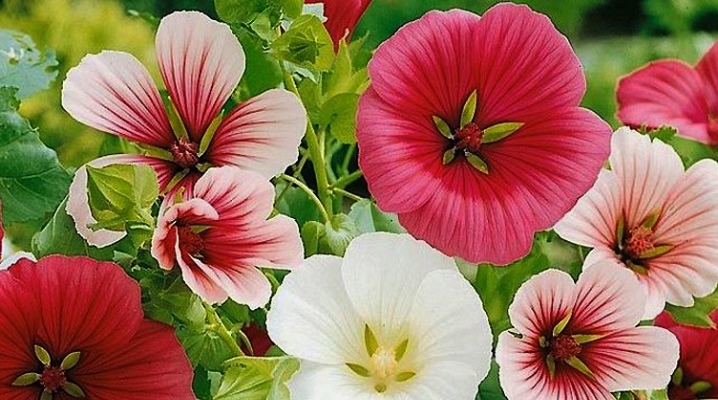
If you are looking for a bright and unusual flower that can be planted on your private plot or grown at home, you should pay attention to malopa. This flower is quite rare for our country, and therefore is exclusive.
What is the botanical description of this plant? What difficulties can arise in the process of planting and caring for him? Is malopa used in landscape design? You will find answers to all questions in this material.

Description
Under natural conditions, the malopa flower lives in the Mediterranean. The second name of the herbaceous plant is a hole. From a botanical point of view, the flower belongs to the Malvov family.
Despite the fact that the hole can be found in its natural habitat, today it is a popular cultivation object among gardeners.
The most attractive feature of the plant is its large, funnel-shaped flowers.
To some extent, they resemble mallow corollas, however, they are more graceful in shape., and also have a bright color.
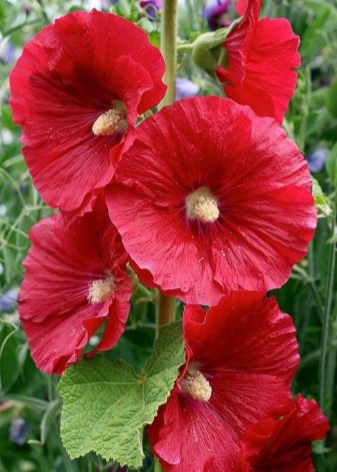

According to its biological characteristics, malopa is an annual plant. The height of the bush can vary from 0.4 to 1 meter (depending on the specific variety). The stem is branchy. The shape of the leaves is heart-shaped in outline, and it also has jagged edges. The flowers of the hole grow singly. Five petals of one inflorescence form a corolla. In addition, each individual flower creates about 50 small-sized seeds.
First of all malopa as a garden plant will attract lovers of rare and unusual plants... However, the flower can be grown not only on its own site, but also at home.
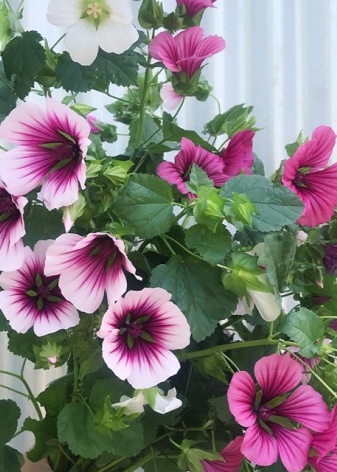
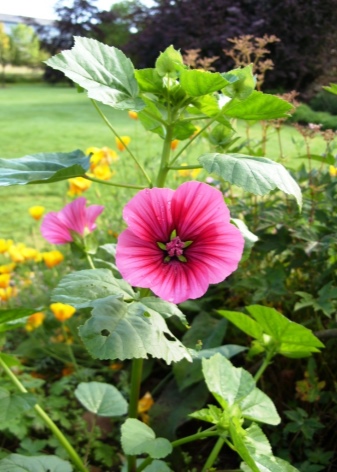
Comparison with Lavater
Some types of malopa are often confused with a plant such as lavatera. However, there are significant differences between the flowers.
So, the most important distinguishing feature of malopa is the size... The hole has larger flowers and taller stems. It is this characteristic that is decisive in determining which plant is in front of you.
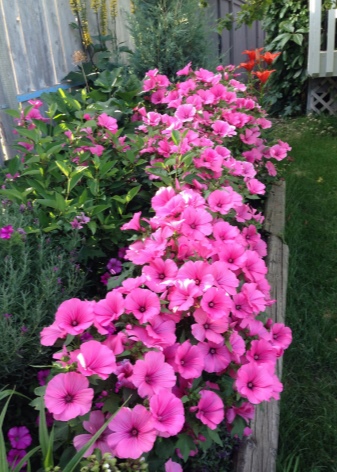
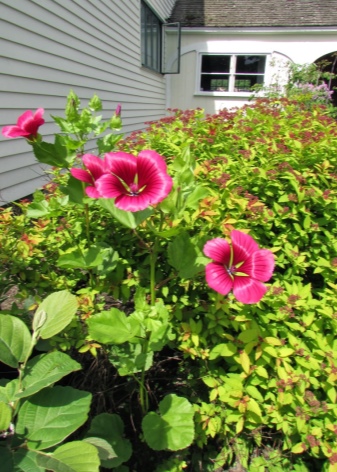
Overview of species and best varieties
Today professional botanists there are three types of malopa:
- Malope anatolica;
- Malope trifida;
- Malope malacoides.
These species are not homogeneous and include different varieties.
- "Diamond Rose" - this variety is distinguished by beautiful flowers, which are painted in white and burgundy shades, and the maximum height of malopa can reach 0.9 meters.
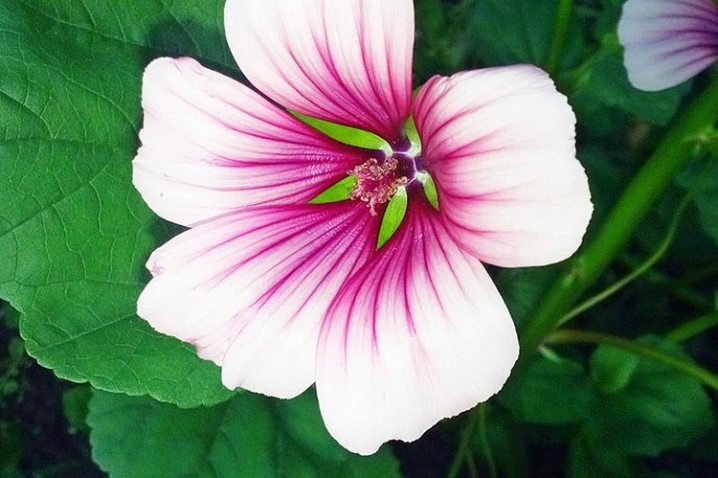
- "Purpurea" - the color of the buds is quite unusual, it combines red and blue tones.

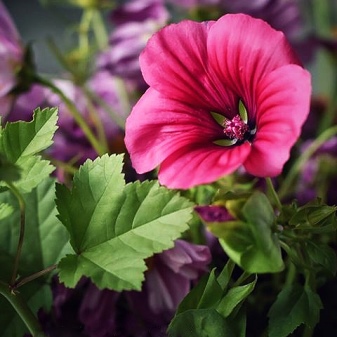
- "Belyana" - the variety got its name due to the snow-white shade of the corollas, in addition, one cannot fail to note the rather impressive indicators of its height, which can reach 1 meter.
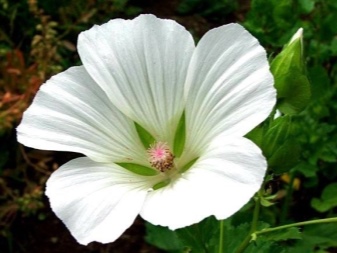
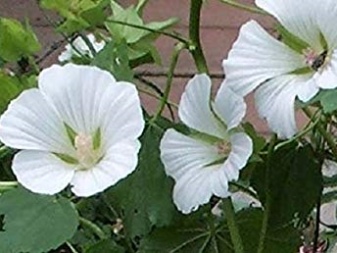
- "Glaser" - this variety is hybrid, and therefore the color of the flowers is rather heterogeneous. It can include shades such as white, pink, black, burgundy, etc.
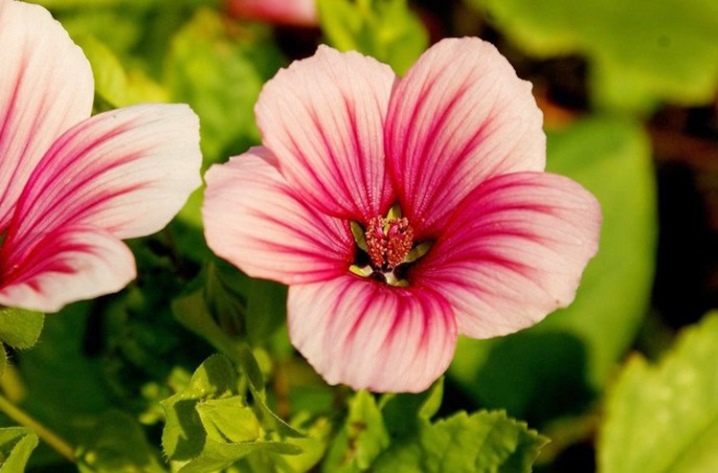
- "Gorgeous" - this plant differs from others in its rather large dimensions of flowers: the petals can reach 10 cm in diameter.

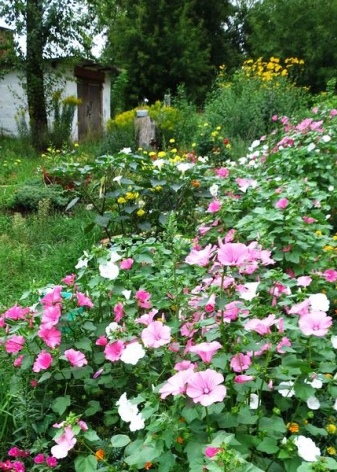
- "Purple" - the variety is the largest, as it can reach a height of 1.2 meters.

Landing rules
As mentioned above, according to its biological characteristics, malopa is an annual plant. In connection with these, its reproduction, and, accordingly, and planting are carried out by means of seeds.
Growing malopa from seeds should be started by sowing the plant for seedlings.
Depending on the specific climatic conditions, this procedure can be carried out at the beginning, middle or end of the spring season. The main thing is that during this period the air temperature stabilizes and does not fall below zero (it is especially important that there are no frosts at night).
For to plant malopa on seedlings, it is necessary to prepare special containers with loose peat soil... It should be remembered that the seeds are rather fragile in their structure, therefore it is recommended to press them only a little into the ground and in no case cover them with earth.

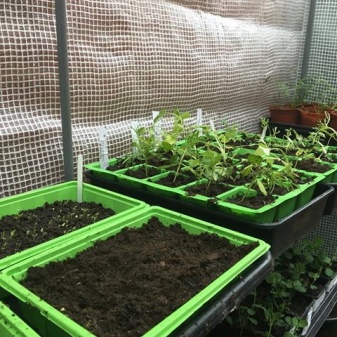
The next step is hydration. This procedure should be carried out by spraying the soil from a spray bottle (this method will warn against using too much water, which can negatively affect the growth and development of seedlings). After that, it is necessary to create the effect of a greenhouse or greenhouse, which will maintain an optimal level of humidity. To do this, cover the container with seeds with foil or glass.
After the first shoots appear, the film or glass must be removed. Also during this period, special attention should be paid to watering (in moderation) and ensuring an adequate level of lighting. At the stage of the appearance of the first leaves, it is recommended to perform a dive procedure.
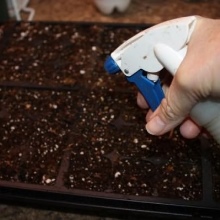


Transplanting a plant into open ground should be done with great care and caution. So, first you need to prepare the ground. It is recommended to introduce a small amount of organic fertilizers into it in advance, as well as prepare holes, the depth of which should be from 5 to 10 cm. In this case, the grooves should be at a distance of 30-35 cm from each other. After all the preparatory procedures, you can plant malopa.
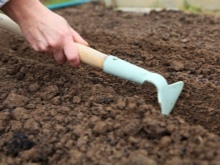
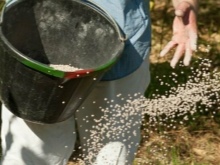
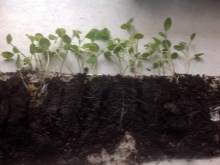
Care features
It should be noted that malopa belongs to those plants that do not need special care measures, and therefore it is often referred to the category of unpretentious flowers. However, even so, in order to in order for malopa growing in open ground to actively grow and develop, it is important to take care of regular and thorough care of it.
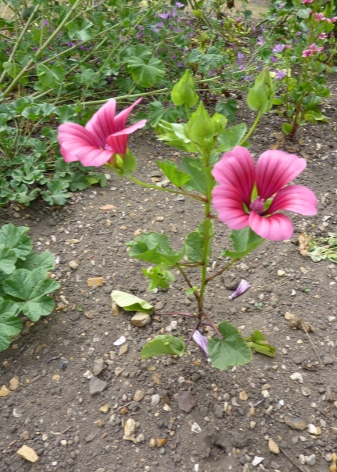
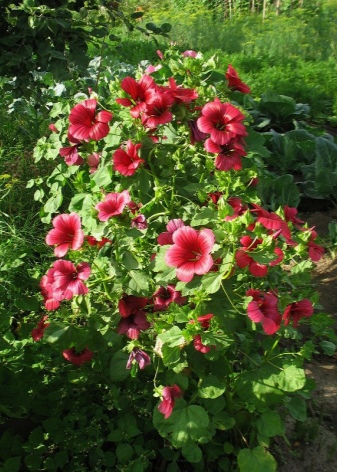
Watering
Only a young plant needs regular and active watering. Such moisturizing procedures have a positive effect on the adaptation of the plant to new conditions, and also stimulate growth. However, after the hole reaches adulthood, the need for constant watering is no longer necessary. At this age, the plant will need watering only if it grows in a rather arid and hot climate, as well as in summer.
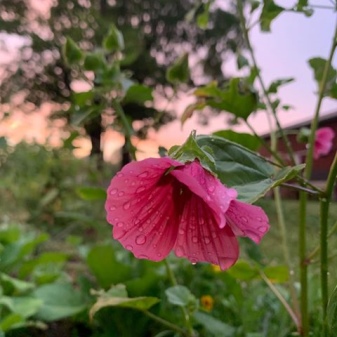
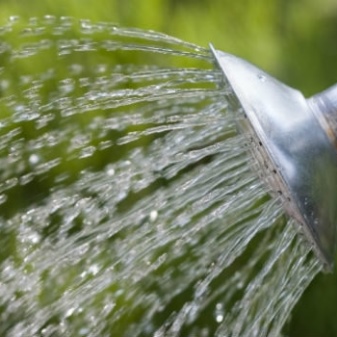
Fertilizers
Fertilizing and feeding is a mandatory step in the process of caring for a plant. So, first of all, you should make sure that you have planted the plant in an area of fertile soil. Otherwise, you will not see the growth and development of the plant. However, even in this case, care should be taken to constantly maintain the level of nutrients and minerals in the soil. It is recommended to use complex mineral formulations as top dressing. On the other hand, it is contraindicated to use organic substances - they can only be introduced during the planting process.
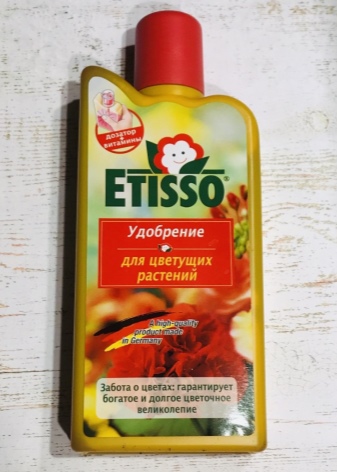
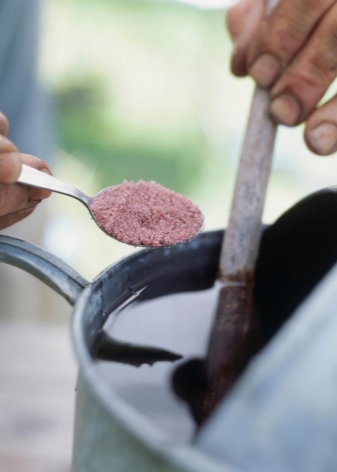
Pruning
Cropping has several functions at once. This process is therapeutic and prophylactic, since the removal of wilted inflorescences and other unusable parts of the plant stimulates the growth and development of young and fresh shoots. On the other side, pruning affects the appearance of the plant, which is especially important for decorative purposes.
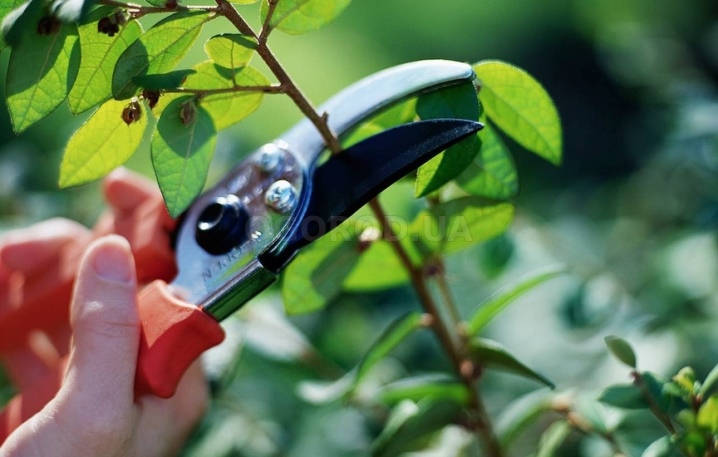
Breeding options
As mentioned above, the only possible breeding option for malopa is seed way... Each flower of the plant forms up to 50 small seeds that must be collected (however, this must be done very carefully so as not to damage the seed). You can also use store-bought seeds (you can find them in almost every gardening store). Please note that the germination capacity of self-collected and purchased material may not be the same, so experienced gardeners often prefer to buy raw materials for planting seedlings.
However, it is strictly forbidden to immediately plant the seeds of a hole in open ground. First of all, it is necessary to sow seedlings. After the plant has grown and developed to a sufficient size, it can be planted in open ground.
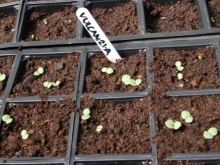

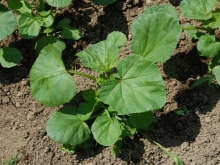
Particular attention should be paid to the choice of the site: it must be well lit. In addition, you can not plant malopa on infertile soils.
A large amount of nutrients and minerals is essential. Also make sure that there is no underwater and groundwater in the area you choose, as excess moisture negatively affects the plant and may even cause its death.


Diseases and pests
Malopa, by its biological properties, is a fairly resistant plant. However, it can be negatively affected by some harmful organisms, as well as diseases (especially if the rules for caring for it or planting have been violated).
As for pests, the following insects most often negatively affect the malopa.
- Spider mite. The mite robs the hole of all nutrient juices. This leads to yellowing of the leaves, as well as their deformation. In order to get rid of the negative influence of the insect, it is important to start treatment at the first signs of an illness. Experts recommend spraying with insecticidal solutions (for example, Fitoverm or Aktellik).
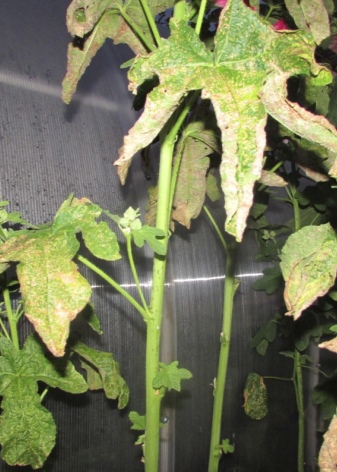

- Aphid. The negative influence of aphids is manifested in the weakening of the plant, namely its stem and foliage. Preventive and curative actions should be similar to those described above.
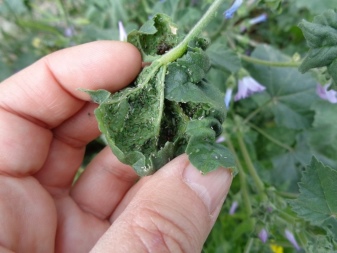
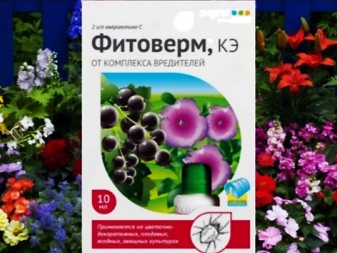
- Nematodes. Unlike the above-described insects, these pests act not on the aerial part of the plant, but on its rhizome. In order to get rid of them, it is necessary to use drugs such as Zoolek Capisol, Nemagon or Karbofos.
In addition to harmful insects, there are several dangerous diseases for the hole.


- Powdery mildew. This disease occurs due to a violation of the rules of care. It is impossible to excessively moisturize the plant and the soil in which the malopa grows. In order to get rid of the disease, you can use fungicidal drugs (for example, "Fundazol" or "Topaz"). You can also use a variety of folk recipes (for example, decoctions and infusions on onion peels).
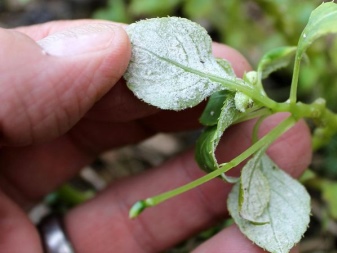
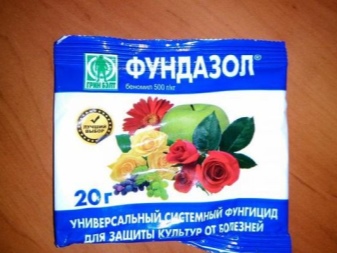
- Rust. It appears as spots on the leaves. It should be treated with Bordeaux fluid, copper oxychloride or Oxychoma. In this case, it is recommended to remove all affected areas.
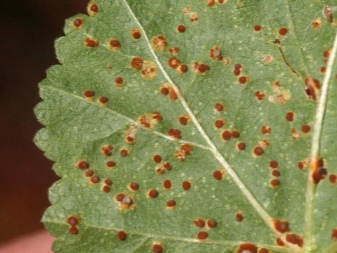

Use in landscape design
Malopa is a plant that is actively used in landscape design. Depending on the specific type of flower, it can be used in a variety of design and artistic compositions (for example, to create mixborders, on flower beds, slides, rock gardens, etc.).
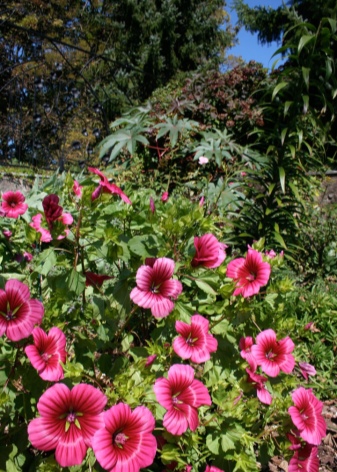
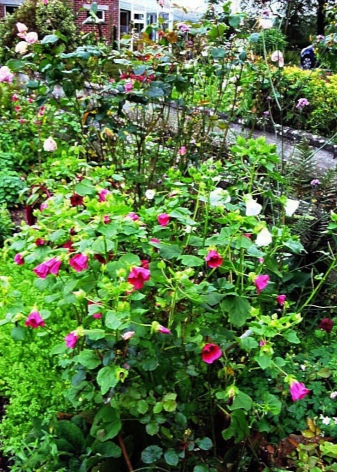
In addition, the plant can be grown indoors and decorate balconies and loggias with it.
To do this, most often use specially designed containers, flowerpots or pots.
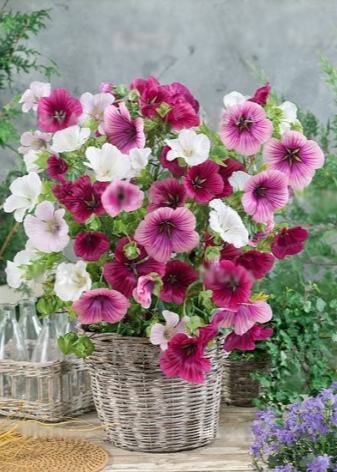
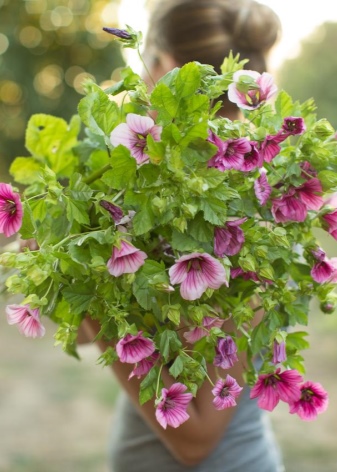
If we talk about the combination of a hole with other plants, then as a supplement to malopa, you can use zinnias, marigolds, chamomile, dahlias, etc. It is important to pay attention to the color scheme, as well as the ratio of the sizes of different plants.
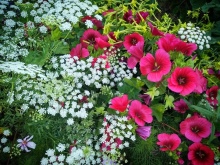
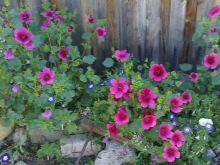
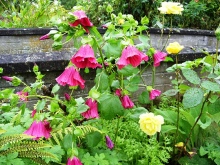
Quite often, malopes are used to create the so-called "rustic" style of site decoration.It can be planted against the background of wicker fences, picket fences, around gazebos and along footpaths.

For sowing seeds of malopa seedlings, see the video.







































































































The comment was sent successfully.